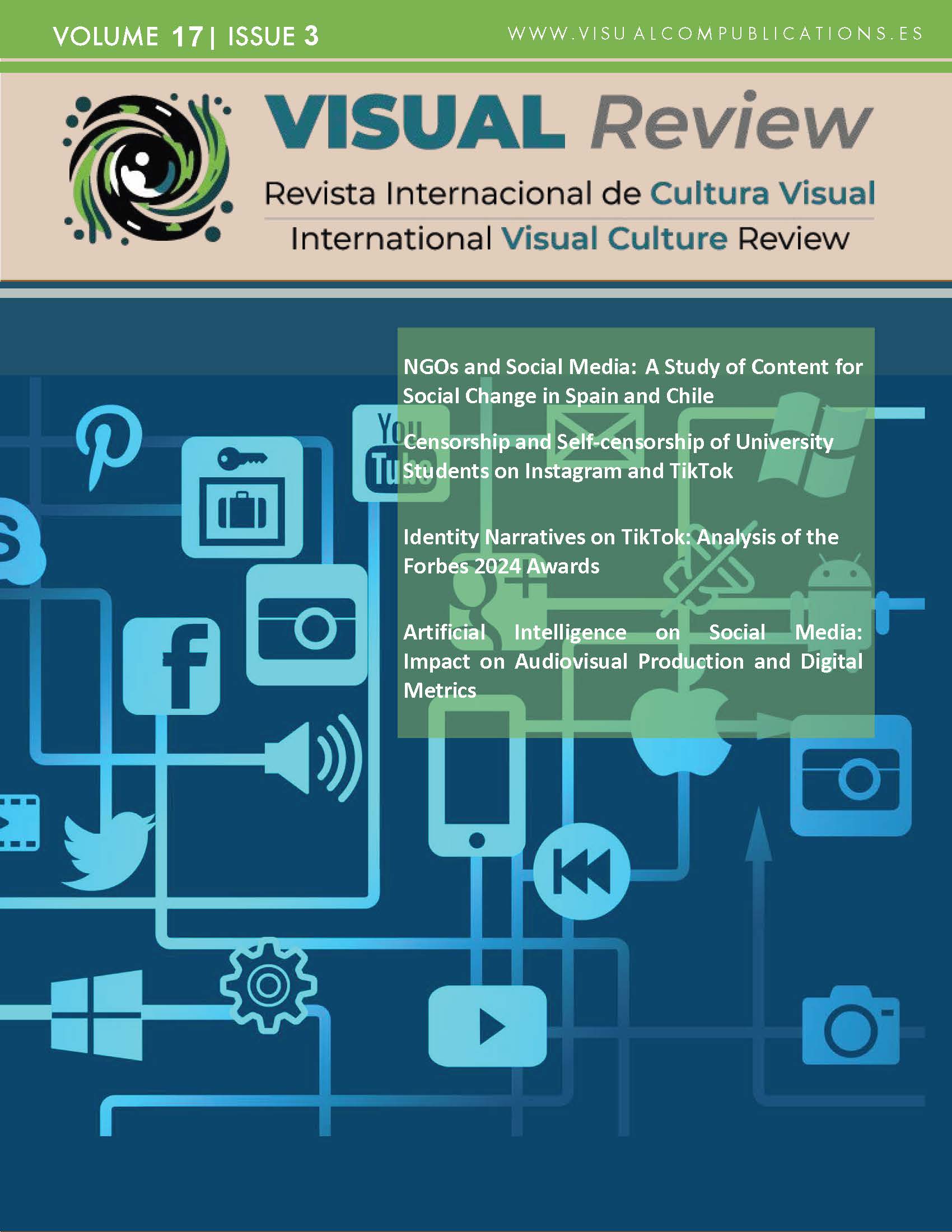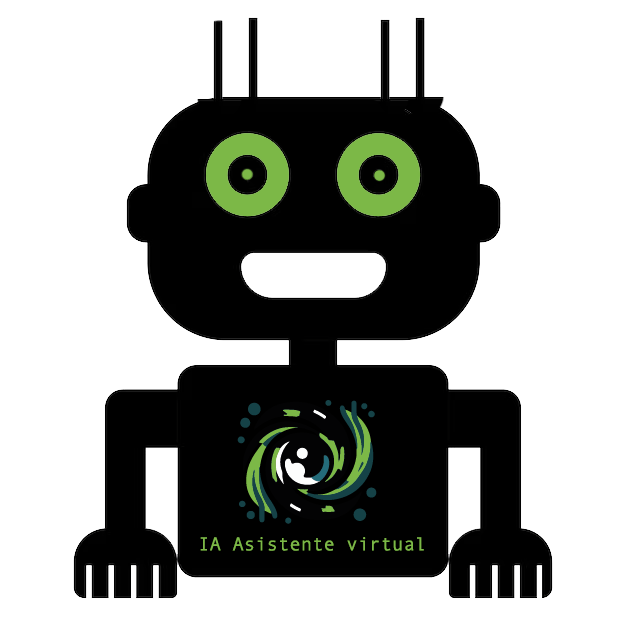Bibliometric Analysis of 3D Animation in the Context of Digital Culture
Evolution, Trends and Contributions (2000-2024)
DOI:
https://doi.org/10.62161/revvisual.v17.5778Keywords:
3D Animation, Digital Culture, Bibliometric Analysis, Virtual Reality, Artificial IntelligenceAbstract
This study presents a bibliometric analysis of 3D animation research in digital culture from 2000 to 2024. It shows a steady growth in scientific output until 2021, driven by technological advances applied to fields such as education, medicine and entertainment. China, the United States and Canada are the main contributors, despite the limited international collaboration, China presents an opportunity to strengthen research in this area. The keyword analysis highlights the increase of topics related to virtual reality, augmented reality and e-learning, which broadens the applications and efficiencies of 3D animation in education and professional fields. The main limitations are the reliance on a single database and the exclusion of documents in other languages, which could underestimate relevant contributions. Therefore, it is recommended to expand the coverage of sources and encourage international collaboration to enhance innovation and academic impact in this field
Downloads
Global Statistics ℹ️
|
628
Views
|
440
Downloads
|
|
1068
Total
|
|
References
Aria, M., & Cuccurullo, C. (2017). bibliometrix: An R-tool for comprehensive science mapping analysis. Journal of Informetrics, 11(4), 959-975. https://doi.org/10.1016/j.joi.2017.08.007 DOI: https://doi.org/10.1016/j.joi.2017.08.007
Aziz, M. A., McKenzie, J. C., Wilson, J. S., Cowie, R. J., Ayeni, S. A., & Dunn, B. K. (2002). The human cadaver in the age of biomedical informatics. The Anatomical Record, 269(1), 20-32. https://doi.org/10.1002/ar.10046. DOI: https://doi.org/10.1002/ar.10046
Donthu, N., Kumar, S., Mukherjee, D., Pandey, N., & Lim, W. M. (2021). How to conduct a bibliometric analysis: An overview and guidelines. Journal of Business Research, 133, 285-296. https://doi.org/10.1016/j.jbusres.2021.04.070. DOI: https://doi.org/10.1016/j.jbusres.2021.04.070
Gazni, A., Sugimoto, C. R., & Didegah, F. (2012). Mapping world scientific collaboration: Authors, institutions, and countries. Journal of the American Society for Information Science and Technology, 63(2), 323-335. https://doi.org/10.1002/asi.21688 DOI: https://doi.org/10.1002/asi.21688
Guo, J., Guo, Q., Feng, M., Liu, S., Li, W., Chen, Y., & Zou, J. (2023). The use of 3D video in medical education: A scoping review. International Journal of Nursing Sciences, 10(3), 430-437. https://doi.org/10.1016/j.ijnss.2023.06.006. DOI: https://doi.org/10.1016/j.ijnss.2023.06.006
Hiranyachattada, T., & Kusiririrat, K. (2020). Using mobile augmented reality to enhance students' conceptual understanding of physically-based rendering in 3D animation. European Journal of Science and Mathematics Education, 8(1), 1-5. https://doi.org/10.30935/scimath/9542. https://doi.org/10.30935/scimath/9542 DOI: https://doi.org/10.30935/scimath/9542
Ho, L.-H., Sun, H., & Tsai, T.-H. (2019). Research on 3D Painting in Virtual Reality to Improve Students' Motivation of 3D Animation Learning. Sustainability, 11(6), 1605. https://doi.org/10.3390/su11061605. DOI: https://doi.org/10.3390/su11061605
Johnson, L., Adams Becker, S., Estrada, V., & Freeman, A. (2016). NMC Horizon Report: 2016 Higher Education Edition. The New Media Consortium.
Katz, J. S., & Martin, B. R. (1997). What is research collaboration? Research Policy, 26(1), 1-18. https://doi.org/10.1016/S0048-7333(96)00917-1. DOI: https://doi.org/10.1016/S0048-7333(96)00917-1
Kerlow, I. V. (2009). The Art of 3D Computer Animation and Effects (4th ed.) Wiley.
Korbel, J. O., & Stegle, O. (2020). Effects of the COVID-19 pandemic on life scientists. Genome Biology, 21(1), 113. https://doi.org/10.1186/s13059-020-02031-1. https://doi.org/10.1186/s13059-020-02031-1 DOI: https://doi.org/10.1186/s13059-020-02031-1
Kumar, A., Saudagar, A. K. J., AlKhathami, M., Alsamani, B., Hasanat, M. H. A., Khan, M. B., Kumar, A., & Singh, K. U. (2022). AIAVRT: 5.0 Transformation in Medical Education with Next Generation AI-3D Animation and VR Integrated Computer Graphics Imagery. Traitement du Signal, 39(5), 1823-1832. https://doi.org/10.18280/ts.390542 DOI: https://doi.org/10.18280/ts.390542
Lin, S. (2022). Research on the Application of 3D Animation Special Effects in Animated Films: Taking the Film Avatar as an Example. Scientific Programming, 2022, Article ID 1928660. https://doi.org/10.1155/2022/1928660 DOI: https://doi.org/10.1155/2022/1928660
Ma, Y. (2024). A deep learning-based method for evaluating the quality of corporate brand packaging visual design. Applied Mathematics and Nonlinear Sciences, 9(1), 123-134. https://doi.org/10.2478/amns-2024-0680 DOI: https://doi.org/10.2478/amns-2024-0680
Pertíñez López, J., & Alonso Valdivieso, C. (2022). Hybrid processes in experimental animation. VISUAL REVIEW. International Visual Culture Review / Revista Internacional de Cultura Visual, 11(4), 1–9. https://doi.org/10.37467/revvisual.v9.3700 DOI: https://doi.org/10.37467/revvisual.v9.3700
Purves, T. (2013). 3D Animation for the Raw Beginner Using Maya. CRC Press. https://doi.org/10.1201/b15467 DOI: https://doi.org/10.1201/b15467
Schell, J. (2019). The art of game design: A book of lenses (3rd ed.). CRC Press.
Scherzer, J., Buchanan, M. F., Moore, J. N., & White, S. L. (2010). Teaching Veterinary Obstetrics Using Three-Dimensional Animation Technology. Journal of Veterinary Medical Education, 37(3), 299-303. https://doi.org/10.3138/jvme.37.3.299. https://doi.org/10.3138/jvme.37.3.299 DOI: https://doi.org/10.3138/jvme.37.3.299
Sierra Sánchez, J. (2012). Radio journalists in Barcelona: trends, training and employment situation. Zer: Journal of communication studies = Komunikazio ikasketen aldizkaria, 32, 73-87.Tang, L., & Shapira, P. (2011). China-US scientific collaboration in nanotechnology: Patterns and dynamics. Scientometrics, 88(1), 1-16. https://doi.org/ 10.1007/s11192-011-0376-z. DOI: https://doi.org/10.1007/s11192-011-0376-z
Wang, L., Wang, X., Philbin, S. P., & Zhou, D. (2015). International research collaboration: An emerging domain of innovation studies? Research Evaluation, 24(2), 145-160. https://doi.org/ 10.1016/j.respol.2018.08.005.
Wolf, M. J. P., & Perron, B. (Eds.) (2013). The Routledge Companion to Video Game Studies. Routledge. https://doi.org/10.4324/9780203114261 DOI: https://doi.org/10.4324/9780203114261
Zhang, R. (2022). Three-Dimensional Animation Space Design Based on Virtual Reality. Scientific Programming, 2022, Article ID 6559155. https://doi.org/10.1155/2022/6559155 DOI: https://doi.org/10.1155/2022/6559155
Zhang, W., & Tsai, S.-B. (2021). A Corpus-Based and Complex Computing Digital Media System for 3D Animation. Wireless Communications and Mobile Computing, 2021, Article ID 7578957. https://doi.org/10.1155/2021/7578957 DOI: https://doi.org/10.1155/2021/7578957
Downloads
Published
How to Cite
Issue
Section
License
Copyright (c) 2025 Authors retain copyright and transfer to the journal the right of first publication and publishing rights

This work is licensed under a Creative Commons Attribution-NoDerivatives 4.0 International License.
Those authors who publish in this journal accept the following terms:
-
Authors retain copyright.
-
Authors transfer to the journal the right of first publication. The journal also owns the publishing rights.
-
All published contents are governed by an Attribution-NoDerivatives 4.0 International License.
Access the informative version and legal text of the license. By virtue of this, third parties are allowed to use what is published as long as they mention the authorship of the work and the first publication in this journal. If you transform the material, you may not distribute the modified work. -
Authors may make other independent and additional contractual arrangements for non-exclusive distribution of the version of the article published in this journal (e.g., inclusion in an institutional repository or publication in a book) as long as they clearly indicate that the work was first published in this journal.
- Authors are allowed and recommended to publish their work on the Internet (for example on institutional and personal websites), following the publication of, and referencing the journal, as this could lead to constructive exchanges and a more extensive and quick circulation of published works (see The Effect of Open Access).













